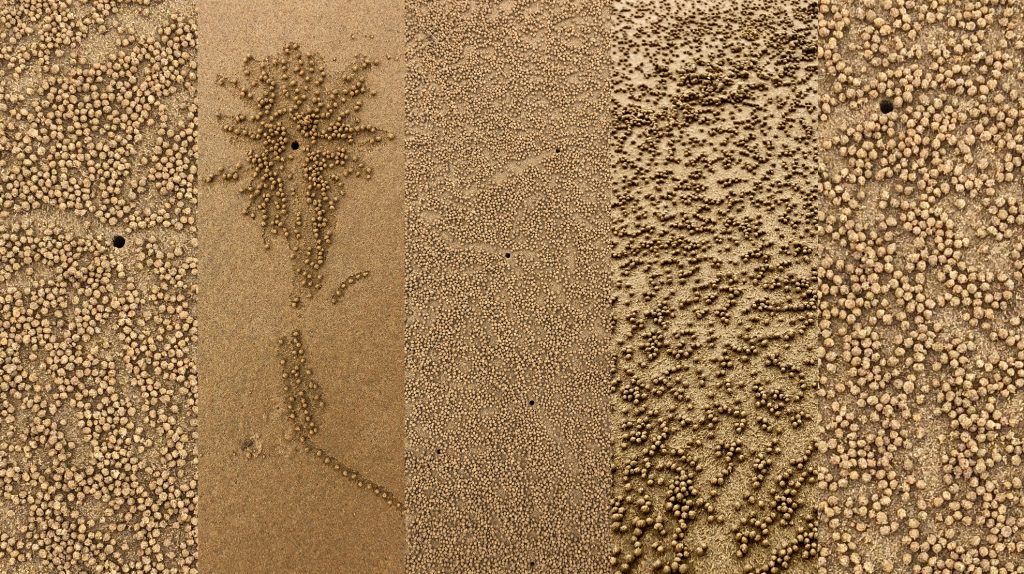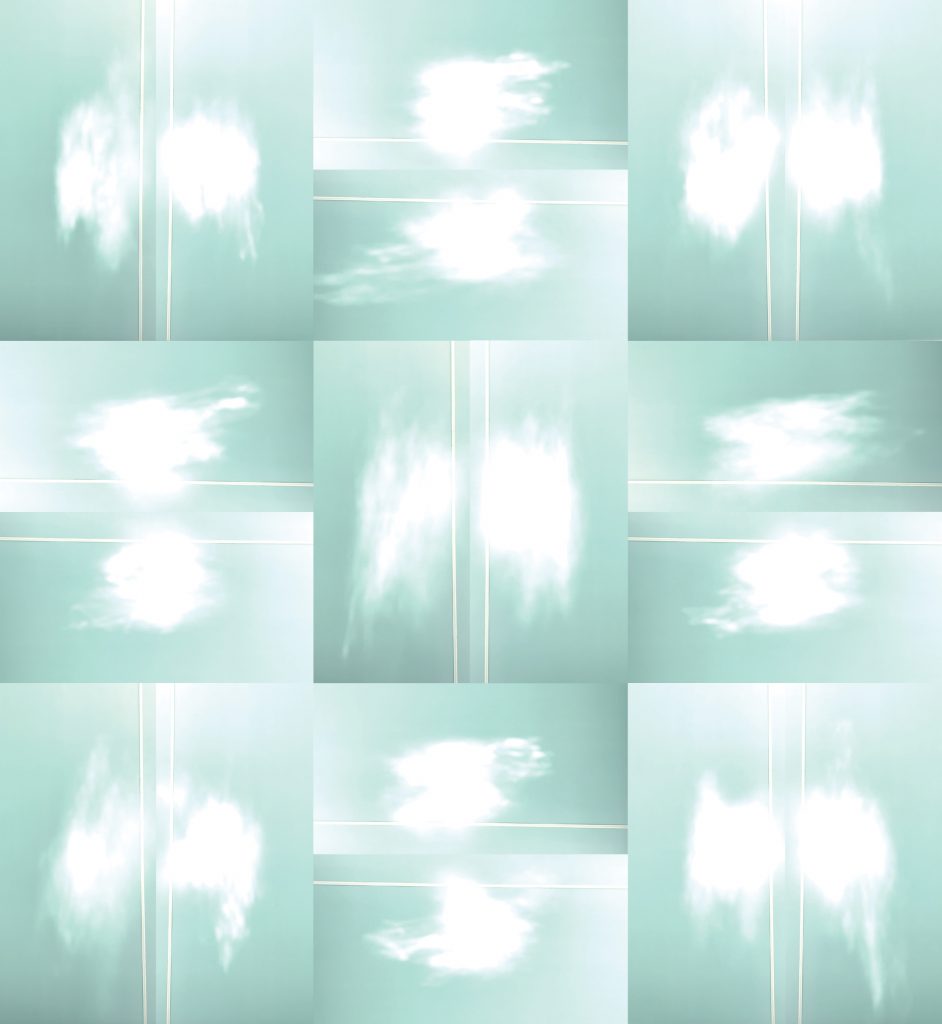
S 17°57’23” E 146° 5’ 30” (Sand Balls), 2021.
Polyptych from digital photographs.
© Ainslie Murray 2021.
The Registry of Itinerant Architectures is an enduring and evolving place for registering temporary, mobile, intangible and/or minimal forms of architecture that fall outside the lens of conventional scholarly attention.
The Registry extends public art and architecture practice and actively generates new, detailed knowledge about itinerant forms of architecture and the patterns of inhabitation that are associated with them. As an artistic practice that is mobile itself while investigating other mobilities, the Registry moves with and creates itinerant space with its subjects. Evidence of itinerant architectures is discovered, documented and collected to formulate a cumulative proposition over time.
The Registry sits on the edge of interdisciplinary art and architecture practice; it draws on and plays with the conventions of architectural practice and through such play actively unsettles, disrupts and challenges assumptions about what should and shouldn’t be called ‘architecture’. The Registry is informed by practices that apprehend, in one way or another, aspects of space and experience that are essentially beyond apprehension. It is a steady and opportunistic accumulation of practices encountered in the course of research-creation that work together to pose a twinned question: is this architecture, and who is the architect?

S 17°52’18” E 146° 5’ 34” (Reflection), 2021.
Polyptych from digital photographs.
© Ainslie Murray 2021.
How the Registry works
The artist is the Registrar and is responsible for seeking, documenting and proposing itinerant architectures. The Registrar conducts research and speculates on the location and possible appearance of itinerant architectures. In the manner of a storm chaser, the Registrar sets off on local, national or international journeys to discover the itinerant architecture. The range of possible sites or scenarios is vast — the Registrar could be trekking in the Himalayas in pursuit of a palanquin being carried on a pilgrim route, or in a quiet regional caravan park observing an elderly couple setting up their caravan.
Sites and scenarios will range from the ordinary to the extraordinary. In the manner of an ethnographer researching structural interactions through time and place, the Registrar seeks, observes, documents, analyses and interprets itinerant architectures and assembles these systematically in the Registry in order to repetitively approach the research questions from multiple angles over time. The Registrar is neither pure participant nor pure observer, but instead is anchored in situated personal experience; just as the Registry moves with and creates itinerant space with its subjects, so too does the Registrar observe itinerant architectures through the lived experience of them.
The Registry will be an open access 3D digital online space available for instant and ongoing global dissemination from mid-2022. It will take the form of an object-laden atmospheric vortex in which users may click on a moving object to discover the registered practices. New practices are added as new objects in an existing structure over time. The evolution of the Registry will be shared through social media channels.

Field Vortices, 2017. Detail.
Perforated Tyvek. 210 x 297mm.
© Ainslie Murray 2017.
Dr Ainslie Murray
UNSW Built Environment
www.ainsliemurray.com




